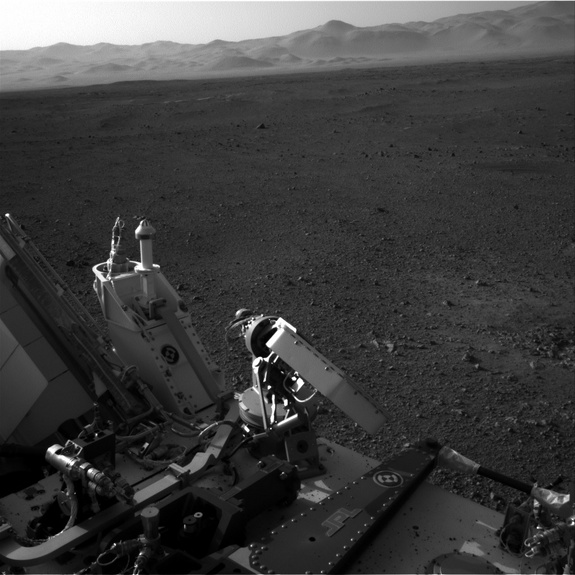
If androids dream of electric sheep, what do Mars rovers dream about? Their fiery descents through the Red Planet's atmosphere? Or maybe their Earthly home, so many million miles away?
The seemingly silly question is worthy of a few minutes' consideration, for researchers revealed Tuesday (Aug. 14) that NASA's Mars rover Curiosity on the Red Planet has a "dream mode." This state allows the 1-ton robot to save energy while performing vital functions, scientists said.
"It's sort of the reptile brain for the rover," Curiosity chief avionics engineer Jim Donaldson, of NASA's Jet Propulsion Laboratory (JPL) in Pasadena, Calif., told reporters Tuesday.
"So what it allows us is maintaining a look at the health of the vehicle while the compute element is turned off," Donaldson added. "And it allows turning on heaters, on actuators and so on, in preparation for the next science activity." [Gallery: Curiosity's 1st Photos of Mars]
Curiosity, the heart of NASA's $2.5 billion Mars Science Laboratory mission, touched down inside the Red Planet's Gale Crater on the night of Aug. 5. The six-wheeled rover's main task is to determine if Mars is, or ever was, capable of supporting microbial life.
Curiosity's prime mission is slated to last about two years, but its plutonium power source could keep the rover roaming for considerably longer than that if no key parts break down, researchers have said.
Still, the Curiosity rover team is keen to conserve energy whenever and wherever they can. And that's where "dream mode" comes in.
Get the world’s most fascinating discoveries delivered straight to your inbox.
"A lot of times we do stuff with the rover computer off, because it saves energy for us," said rover mission systems manager Mike Watkins of JPL. "By using our reptile brain here in dream mode, it allows us to do just enough activities to stay alive and monitor what's going on when we're asleep."
Curiosity's main science target is the base of Mount Sharp, the mysterious 3.4-mile-high (5.5 kilometers) mountain that rises from the center of Gale Crater. Mars-orbiting spacecraft have spotted signs of clays and sulfates in Mount Sharp's lower reaches, suggesting the mound's base was exposed to liquid water long ago.
While scientists will likely order Curiosity to spend lots of time poking around Mount Sharp's foothills, the mountain's slopes are so gentle that the rover might be able to climb all the way to the top, given enough time, researchers have said.
So maybe that's something else Curiosity is dreaming about — the amazing Red Planet vista it could get from the top of Mount Sharp.
This story was provided by SPACE.com, a sister site to LiveScience. Visit SPACE.com for complete coverage of NASA's Mars rover Curiosity. Follow SPACE.com senior writer Mike Wall on Twitter @michaeldwall or SPACE.com @Spacedotcom. We're also on Facebook and Google+.





